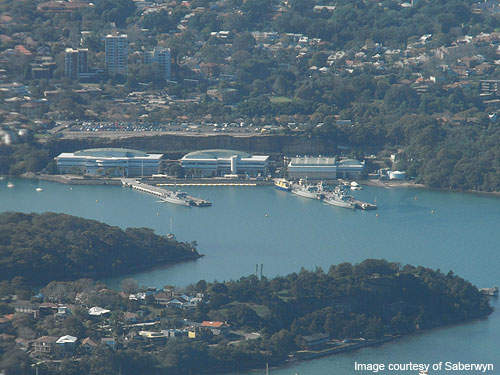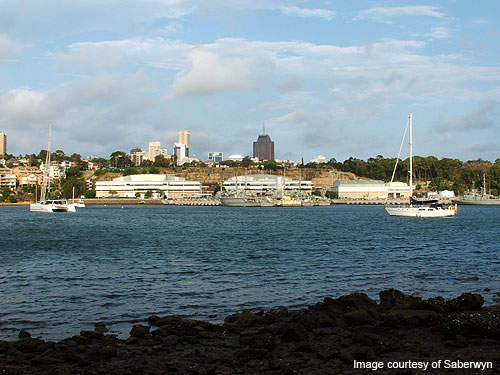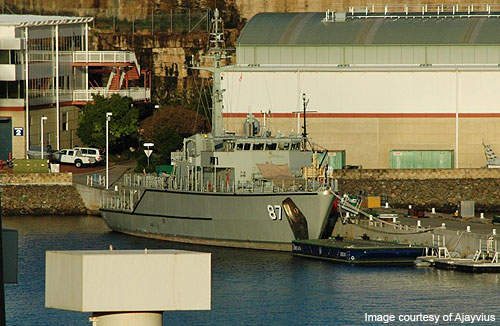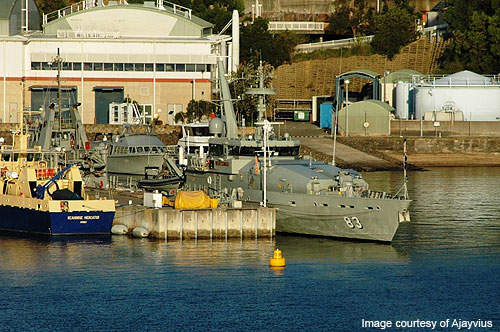HMAS Waterhen is the Royal Australian Navy (RAN) shore installation situated in Waverton, a suburban in Sydney. The base supports the Australian mine warfare vessels and patrol boat forces including the Attack and the Fremantle classes of patrol boats.
HMAS Waterhen houses the modern mine countermeasure systems and technology of the RAN. The base employs approximately 800 people.
Location and layout
Located on the lower north shore of Sydney, HMAS Waterhen stretches over 3.3ha of leased site and an additional 0.8ha of defence-owned area. The base is protected by a steep rock face forming a wall on its back side.
This cliff was created by removing the stone from the Waverton site for constructing the Captain Cook Dock and Garden Island land bridge.
HMAS Waterhen history
The site was earlier used to construct fibro buildings in the advent of WWII. HMAS Waterhen served as a joint base for RAN and US Navy between from March 1943 to June of the same year. The facility was used as a storage depot until its commissioning. The base was commissioned in December 1962 to support six Ton Class mine sweepers acquired from the Royal Navy.
The River Class frigate HMAS Culgoa was used as a barracks ship since the small ship base had no accommodation facilities for its workforce of 85 people.
The first indigenously designed and built Attack Class patrol boats were stationed for the first time at HMAS Waterhen in March 1969. The existing facilities were upgraded to support Mine Warfare Systems Centre and six Huon Class minehunters, but the modernisation was essential to serve the countermeasure forces of future.
The base underwent an extensive renovation and modernisation programme during 1994-1996. Sinclair Knight Merz was responsible for the design of the marine facilities. The buildings at the northern end of the base were demolished when the renovation began in December 1994. The entire site was levelled and existing piers were removed within few months.
Temporary constructions were created for administrative staff and the base was operational throughout the project. The A$70m project was completed eight months ahead of schedule in December 1996. The base was handed over to the Navy in February 1997.
The Commander Australian Navy Mine Warfare and Clearance Diving Group (COMAUSNAVMCDGRP) was formed in 2000. HMAS Waterhen was home to the Bay Class catamaran-hull minehunters Rushcutter and Shoalwater until they were decommissioned in August 2001.
HMAS Waterhen operations
HMAS Waterhen is home to the Australian Navy Mine Warfare and Clearance Diving Group consisting of the Clearance Diving Team One and six Huon Class Minehunter Coastal (MHC) vessels – HMAS Huon, HMAS Hawkesbury, HMAS Norman, HMAS Gascoyne, HMAS Diamantina and HMAS Yarra.
The base is also a homeport for minor warships and support craft including Diving Tender (DTV) Seal, navigation training vessel Seahorse Mercator, Torpedo Recovery Vessel (TRV) Trevally, and Mine Sweeper Auxiliaries (MSA) Bandicoot and Wallaro. Minor warships visiting or operating temporarily from Sydney also use the base.
HMAS Waterhen facilities
The new Waterhen complex consists of three main buildings, two piers, a small boat jetty and a slipway ramp. Each pier measuring 175m in length was designed to berth craft of up to 770dwt. The concrete deck structure of the pier is supported by steel tubular piles and features walkthrough service ducts for future maintenance operations.
The two three-storied main buildings house the Mine Warfare Systems Centre, Clearance Diving Team One (AUSCDT ONE) and the Mine Warfare Faculty (MWF). The Waterhen and COMAUSNAVMCDGRP support personnel also reside in the buildings.
The third building accommodates Fleet Intermediate Maintenance Authority (FIMA)-Waterhen. The Building 1 alone has more floor area than the total space available before modernisation.
Other facilities include an oil fuel installation (OFI), a gatehouse and a car park. The four-level car park has 196 car parking spaces.







